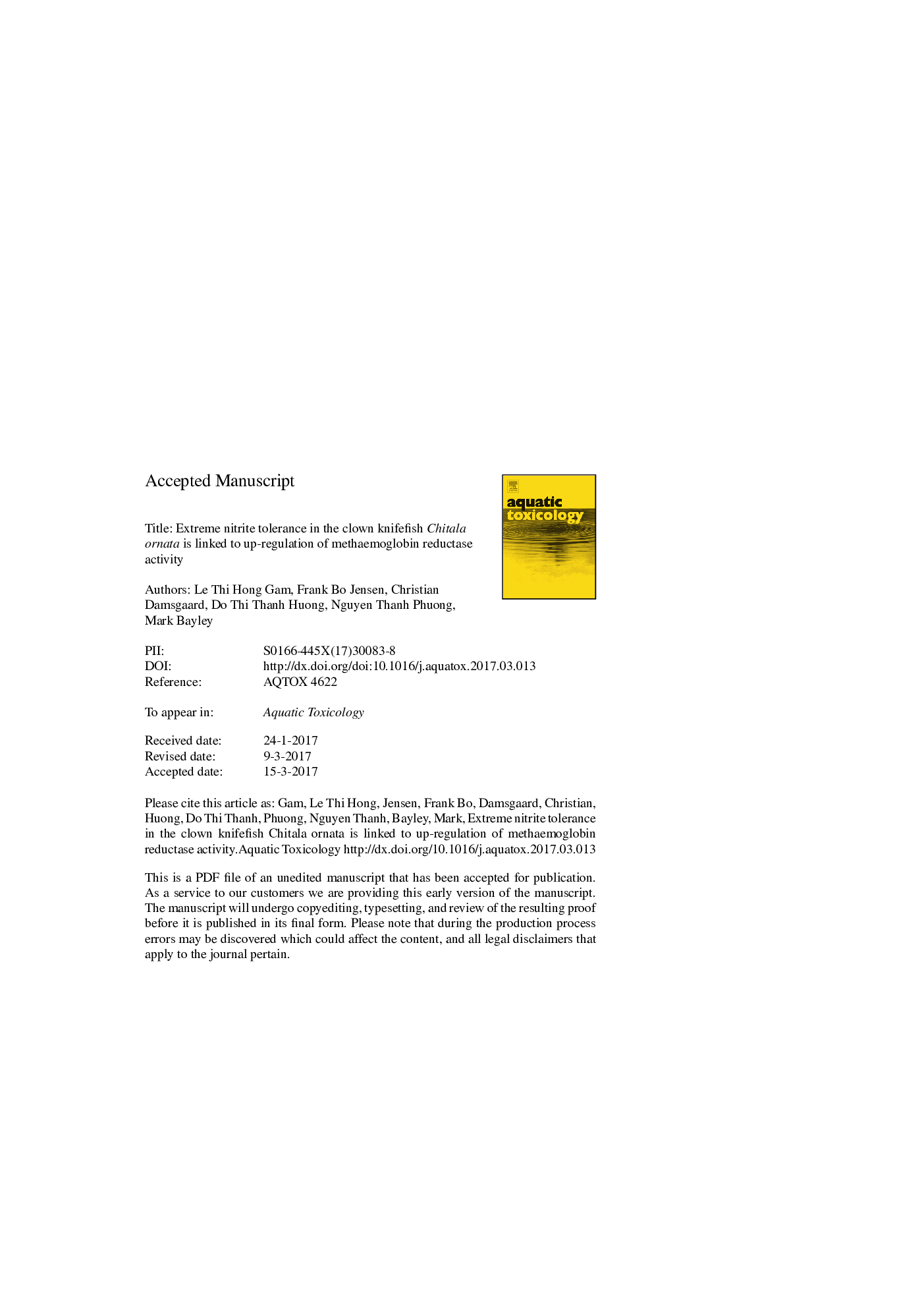| Article ID | Journal | Published Year | Pages | File Type |
|---|---|---|---|---|
| 5764290 | Aquatic Toxicology | 2017 | 30 Pages |
Abstract
The clown knifefish is a facultative air breather, which is widely farmed in freshwater ponds in Vietnam. Here we report a very high nitrite tolerance (96Â h LC50 of 7.82Â mM) in this species and examine the effects of 1Â mM (LC5) and 2.5Â mM (LC10) ambient nitrite on haemoglobin (Hb) derivatives, electrolyte levels, acid-base status, and total body water content during 7Â days of exposure. Furthermore, we tested the hypothesis that erythrocyte methaemoglobin (metHb) reductase activity is upregulated by nitrite exposure. Plasma nitrite levels increased for 2-3Â days but stayed below environmental levels and fell towards control values during the last half of the exposure period. Plasma nitrate, in contrast, rose continuously, reflecting detoxification of nitrite to nitrate. MetHb generated from the reaction between nitrite and erythrocyte Hb reached 38% at day 2, but then decreased to 17% by the end of experiment. The first order rate constant for metHb reduction by erythrocyte metHb reductase increased from 0.01 in controls to 0.046Â minâ1 after 6Â days of nitrite exposure, showing up-regulation of this enzyme. While such upregulation has been suggested in nitrite-exposed fish species, this study provides the first experimental evidence.
Related Topics
Life Sciences
Agricultural and Biological Sciences
Aquatic Science
Authors
Le Thi Hong Gam, Frank Bo Jensen, Christian Damsgaard, Do Thi Thanh Huong, Nguyen Thanh Phuong, Mark Bayley,
